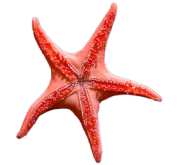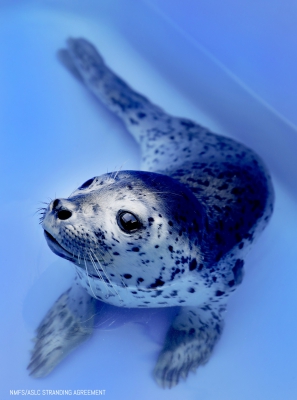Alaska SeaLife Center’s Wildlife Response Season is in Full Swing July 2, 2019
Seward, Alaska (July 2, 2019) – In April, the Alaska SeaLife Center (ASLC) began a busy wildlife response season with the admittance of a sea otter pup, Tazlina, and a bearded seal, Saktuliq. In May and June, four harbor seals and one spotted seal were integrated into the Wildlife Response Program. The seals arrived from various areas of Alaska; Homer, Ninilchik, Cordova, and Stebbins. If the harbor seals recover, they will hopefully all be released back to the wild at the end of summer.
Receiving a large influx of patients can be a challenge for a small non-profit facility. Currently, only three full-time staff members work in the Wildlife Response department. Part-time staff, interns, and partners from other aquariums are critical for animal care. The seals alone receive daily treatments, four feedings, warm water swims, and cleanings which require extensive preparation by staff. In addition to new seal patients, Tazlina, the sea otter pup, is still receiving 24/7 care in ASLC’s I.Sea.U near the touch tank. ASLC partners from Vancouver Aquarium are graciously donating staff members to help care for her.
While the Center has responded to numerous animals this season there are some that have unfortunately not survived. There were seven calls about harbor seals and three passed due to various health conditions or injuries. “Every year some animals don’t make it. Sometimes the reason animals strand is due to an advanced illness or birth defect that we won’t discover until we begin treatment,” states Wildlife Response Curator, Jane Belovarac. While it is disheartening to lose a patient, the Center is still proud of their high success rate in rehabilitating sick and injured marine life.
The Center follows strict procedures when intervening with a wild animal. A marine mammal must be in critical condition to justify an immediate pick up. “Once you decide to take an animal off of the beach, its life is changed forever. If an animal, pup or adult, does not meet the criteria for an obvious pick up we will often give it a tide cycle or an overnight to see if it recovers on its own,” notes Belovarac. Two animals this season actually returned to the ocean after leaving them for observation, which is what the team likes to see.
If a sick or injured animal is encountered, ASLC staff urge people to call first, observe at a safe distance, respect the animal’s territory, and keep pets and children away. ASLC operates a 24-hour stranding hotline where trained professionals will walk people through the proper steps to assist the animal.Call 1-888-774-SEAL if you see a marine mammal in distress.
Over 80% of the funding for the Alaska SeaLife Center’sWildlife Response Program comes from charitable donations. The Center is thankful for organizations like Marathon Petroleum, BP Alaska, ConocoPhillips Alaska, SeaWorld & Busch Gardens Conservation Fund, GCI, HDR Marine, and PetZoo whose generous support helps ASLC care for marine mammals.
About the ASLC
Opened in 1998, the Alaska SeaLife Center operates as a private, non-profit research institution and a public aquarium. It generates and shares scientific knowledge to promote understanding and stewardship of Alaska’s marine ecosystems. The ASLC is an accredited member of the Association of Zoos and Aquariums. To learn more, visit www.alaskasealife.org.


